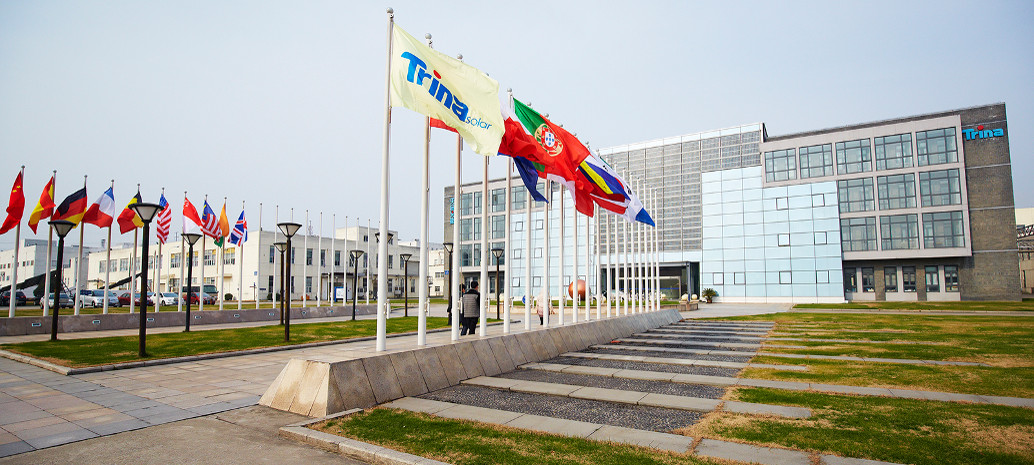As global concerns about climate change escalate, the world’s most advanced markets are demanding higher standards of safety and sustainability backed by full-lifecycle assessments of all manner of products. One of the world’s largest solar manufacturers, Trina Solar, last week became the first photovoltaic company to achieve dual certification from UL, a global independent safety-science organisation that sets industry standards for new products, and EPD Italy, which records compliance with international standards of environmental performance.
The International Energy Agency estimates that solar PV will account for a third of the world’s total energy generation by 2030.
With a mandate to produce “clean” energy, manufacturers of solar products are under pressure to ensure their supply chains, factories, transportation, product longevity and recycling practices are constantly reviewed for opportunities to step up efficiencies and reduce environmental impact.
“Trina solar will spare no efforts to further resolve the contradiction between technological development and resources consumption,” said Bo Cao, Trina Solar Deputy General Manager, at a recognition ceremony held in the city of Changzhou, in China’s Jiangsu Province where Trina Solar is headquartered.
The responsibility of GW-scale production
GlobalData ranged Trina Solar third in the world in terms of gigawatts of solar modules shipped in 2019; its 9.7 GW came in behind JA Solar at 10.3 GW and the leader Jinko at 14.2 GW.
Shipping figures for 2020 are yet to be released, but Trina Solar’s third-quarter reports released in November last year saw a year-on-year 18.66% increase in realised income.
Last year the company launched a number of high-performance modules in the bifacial and large-format categories to the global market. They included the Vertex bifacial 500W-plus modules, Duomax V and Tallmax V, and the Trina Pro Mega, another 500W-plus offering which is expected to find its biggest market in Australia partly also because of a 8-15% lower balance of system (BOS) cost than the previous Trina Pro range, and mounting systems which can be customised to challenging sites.
Speaking to pv magazine last year, Trina Solar Senior Country Sales Manager for ANZ and the Pacific, Govid Kant said the significance of the shift to 500W-plus modules is in the company’s determination to not only develop new technologies but to bring them to market at large scale.

Image: Trina Solar
Trina Solar has long been committed to transparency in its operations. Its philosophy is that reporting via accredited third-party organisations that measure and confirm its performance on key metrics of sustainable manufacturing lets it set goals, track progress and maintain accountability with all stakeholders, from employees to end customers.
Globally craving accountability
The International Environmental Product Declaration (EPD) System was founded by the Swedish Environmental Protection Agency in 1998.
It acknowledges that “the market is craving” verifiable life cycle assessment (LCA) data, and its program operates in accordance with the International Organization for Standardization (ISO) standards ISO 14025, ISO/TS14027, ISO 14040, ISO 14044 and ISO/TS14067. For construction products in Europe, the EPD programme is also aligned with the European standard EN 15804 and ISO 21930.
The point is, that LCA data within each EPD is verifiable and comparable with that held in another. After issue, EPDs remain valid for five years.
Trina Solar provides photovoltaic products to many utility-scale projects in the European markets and it expects that EPD certification “will become a necessity for bidding throughout Europe and other markets in the future”, the company said in a statement.
With residential rooftop customers in mind, it also refers to recent research showing that more than 60% of European consumers are concerned about the state of the environment, and says “EPD certification provides customers with high-quality environmental product information and underpins Trina Solar’s incessant environmental efforts.”
New entry requirements to emissions-focused markets
Such credentials will become passports to European and North American markets, and others by implication.
Trina Solar monitors its annual manufacturing emissions and its carbon footprint, which its website claims has allowed it to reduce electricity consumption by 42% per megawatt of modules produced between 2015 and 2019; and its water consumption by 32% per megawatt over the same period; along with a 46% reduction in greenhouse gas emissions.
Trina Solar is also a member of PV Cycle, which supports companies in the photovoltaic industry to fulfil waste-management requirements towards tendering for projects, and meeting investor and consumer expectations.
The company’s Chairman, Jifan Gao has said that Trina Solar looks forward to “creating a framework for a future oriented, cleaner, sustainable energy system” that will provide society with a true net benefit from solar energy.
This content is protected by copyright and may not be reused. If you want to cooperate with us and would like to reuse some of our content, please contact: editors@pv-magazine.com.









By submitting this form you agree to pv magazine using your data for the purposes of publishing your comment.
Your personal data will only be disclosed or otherwise transmitted to third parties for the purposes of spam filtering or if this is necessary for technical maintenance of the website. Any other transfer to third parties will not take place unless this is justified on the basis of applicable data protection regulations or if pv magazine is legally obliged to do so.
You may revoke this consent at any time with effect for the future, in which case your personal data will be deleted immediately. Otherwise, your data will be deleted if pv magazine has processed your request or the purpose of data storage is fulfilled.
Further information on data privacy can be found in our Data Protection Policy.